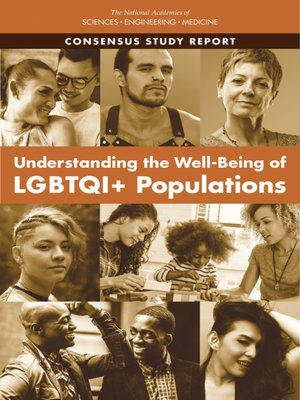Understanding the Well-Being of LGBTQI+ Populations
ebook
By National Academies of Sciences, Engineering, and Medicine

Sign up to save your library
With an OverDrive account, you can save your favorite libraries for at-a-glance information about availability. Find out more about OverDrive accounts.
Find this title in Libby, the library reading app by OverDrive.



Search for a digital library with this title
Title found at these libraries:
| Loading... |
<p>The increase in prevalence and visibility of sexually gender diverse (SGD) populations illuminates the need for greater understanding of the ways in which current laws, systems, and programs affect their well-being. Individuals who identify as lesbian, gay, bisexual, asexual, transgender, non-binary, queer, or intersex, as well as those who express same-sex or -gender attractions or behaviors, will have experiences across their life course that differ from those of cisgender and heterosexual individuals. Characteristics such as age, race and ethnicity, and geographic location intersect to play a distinct role in the challenges and opportunities SGD people face.</p>
<p><i>Understanding the Well-Being of LGBTQI+ Populations</i> reviews the available evidence and identifies future research needs related to the well-being of SDG populations across the life course. This report focuses on eight domains of well-being; the effects of various laws and the legal system on SGD populations; the effects of various public policies and structural stigma; community and civic engagement; families and social relationships; education, including school climate and level of attainment; economic experiences (e.g., employment, compensation, and housing); physical and mental health; and health care access and gender-affirming interventions.</p>
<p>The recommendations of <i>Understanding the Well-Being of LGBTQI+ Populations</i> aim to identify opportunities to advance understanding of how individuals experience sexuality and gender and how sexual orientation, gender identity, and intersex status affect SGD people over the life course.</p>






